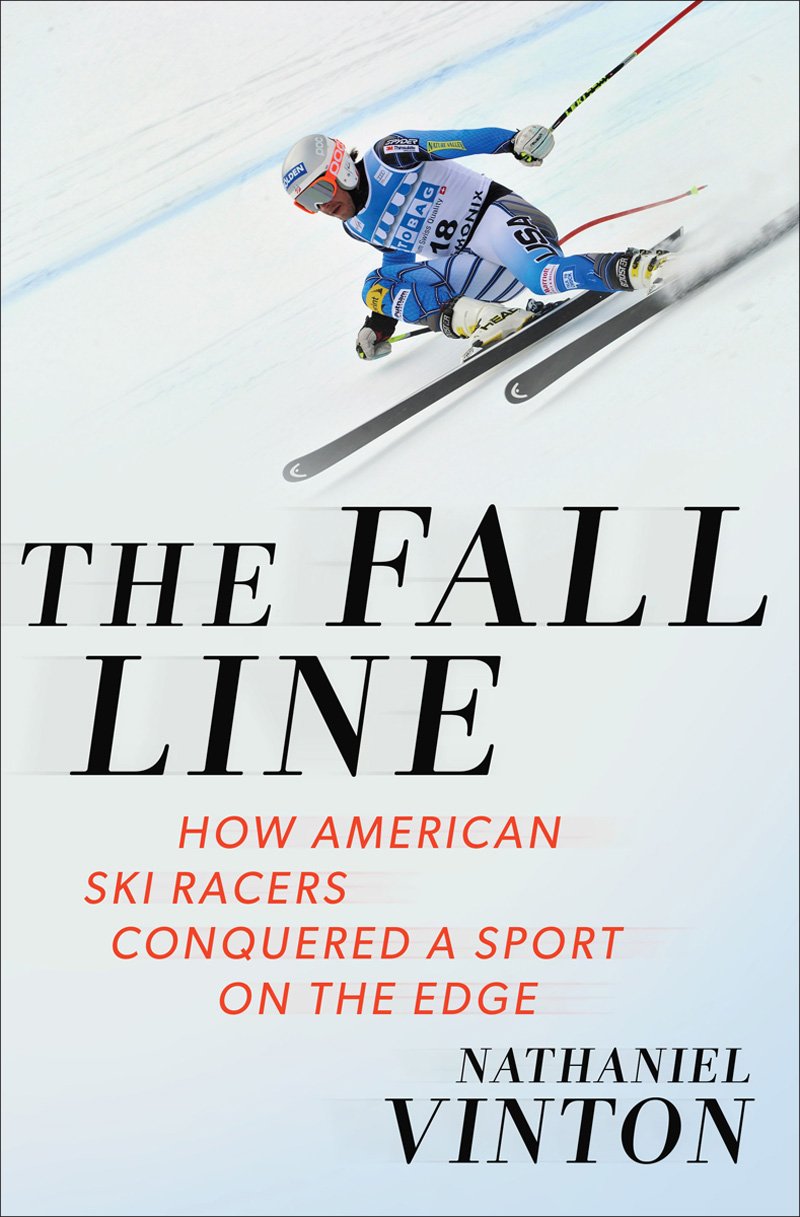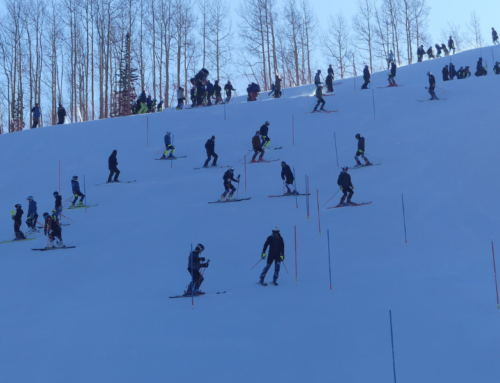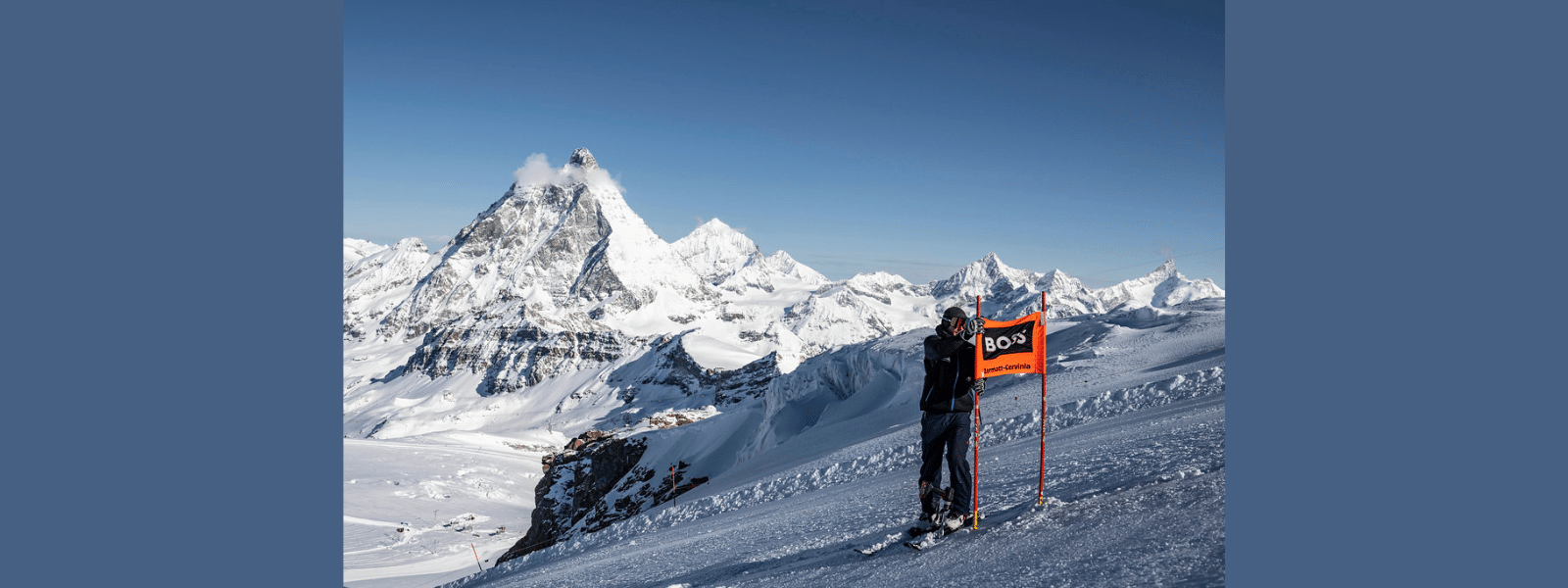Ski Racing’s ‘Boys in the Boat’
“The Fall Line: How American Ski Racers Conquered a Sport on the Edge”
For those who follow the sport of alpine ski racing, it won’t come as a huge surprise to learn that Nathaniel Vinton has written what may be the best book ever about the U.S. Ski Team and the highest levels of alpine ski competition. Vinton has been one of the most astute observers of ski racing for more than a dozen years, with both a writer’s instinct for telling a good story and an insider’s knowledge of the sport.
And this is not a book only for the aficionados. In “The Fall Line: How American Ski Racers Conquered a Sport on the Edge,” Vinton explains the exceedingly complicated sport of alpine ski racing in a way that most all readers will find easy to understand, without losing the interest of the diehard fans. The book does for the U.S. Ski Team in Vancouver in 2010 what Daniel James Brown’s “The Boys in the Boat” did for the U.S. rowers who brought home gold from the Berlin Olympics in 1936. Even if you don’t care about ski racing, you find yourself rooting for these athletes. And even if you know what happened, you find your pulse racing as you read about it.
Vinton, a former ski racer and coach, began covering ski competition right after the Salt Lake 2002 Games, for which he had a front row seat: He was a coach with the Snowbird race team in Utah, and took some of his charges to Snowbasin during the Olympics to serve as a slip crew on the women’s downhill course. While there, he met Steve Porino, the downhiller-turned-journalist who was wrapping up a stint as a Ski Racing writer, and Gary Black Jr., then Ski Racing’s publisher. Ski Racing quickly signed up Vinton to cover the U.S. alpine championships at Squaw Valley, Calif., and he wound up staying with Ski Racing through the 2006 Olympic season. (Full disclosure: I hired Nate Vinton at Ski Racing and worked with him for a couple of years.)

After leaving Ski Racing, Vinton continued traveling and writing about the alpine World Cup circuit as a freelancer for the New York Times and the International Herald Tribune. Along the way, he began writing about doping in athletics, and landed a job at the New York Daily News, part of a team that covered mostly the use of performance-enhancing drugs but also other sports-related flash points. And he covered the Vancouver 2010 and Sochi 2014 Olympic Winter Games for the Daily News.
All of this made him the perfect choice to describe the events and the people that defined the U.S. Ski Team and the sport of alpine ski racing in the first decade-plus of the 21st century.
In “The Fall Line,” Vinton offers close-up looks at an extraordinary cast of characters: U.S. Ski Team CEO Bill Marolt, who got the team to adopt the aspirational motto of “Best in the World,” and saw them make good on that claim in Vancouver; Bode Miller, the once-in-a-generation talent, Olympic champion and loose cannon from the wilds of New Hampshire; and Lindsey Vonn, nee Kildow, who went from a tiny hill in Minnesota to the pinnacle of World Cup and Olympic success, and is now close to becoming the winningest woman of all time on the alpine World Cup.
With those folks and more — Julia Mancuso, Ted Ligety, Andrew Weibrecht and many of the top European athletes — Vinton offers us glimpses of their off-the-race-course personas, connecting the dots between the skiers’ backgrounds and their athletic success. Even if you have followed their careers closely — even if you’ve met them and talked with them in the finish area — you’re going to learn things in “The Fall Line” about these athletes and their lives.
Vinton also ably illustrates the physical danger of World Cup skiing and the emotional toll that the training, travel and competition can take on the athletes. If you read daily newspaper or website coverage of the World Cup, you hear about bad falls, and you learn that this skier has wrecked a knee or that skier has suffered a concussion. But it’s not until you see all this carnage between the covers of one book that you realize just how horrific it all is, what it takes to come back from a serious injury, and how often skiers are playing hurt.
The book also discusses some of the existential threats to snowsports, including climate change. As Vinton points out, it may not be intuitive, but a warming world has led to icier, harder race courses, as organizers struggle to make courses fair for all the starters, and ensure that races go off as scheduled. Hard snow means higher speeds and more, and worse, crashes. The FIS and others, he writes, have reacted by redesigning courses and mandating skis that are actually less efficient at carving high-speed turns. “Like climate change,” Vinton writes, “the new safety measures posed a philosophical question to the next generation of downhillers. Would they get a chance to test their skills and courage against the same mountains their predecessors had raced on? Or would this be the last generation of real downhillers?”
The book’s climax comes at the Vancouver Olympics, from which the U.S. team would take home a record-shattering eight medals, including gold, silver and bronze for Bode Miller and gold and bronze for Lindsey Vonn. Vinton tells us that neither arrived in Vancouver in top physical shape. Miller was nursing a lingering ankle injury that would later prove to be a broken bone; Vonn had a shin so sore that she couldn’t put on a ski boot in the days leading up the Games. But they both managed to produce their best performances when they mattered the most, despite a competition schedule scrambled by weirdly warm weather. Vinton is at his best giving us second-by-second descriptions of the events at Whistler, in waxrooms, starthouses and finish areas, on racecourses and behind the scenes.
An epilogue takes Vinton and his readers to Krasnaya Polyana in Russia, where the alpine events were held for the Sochi Olympics in February 2014. Vonn was conspicuously absent, but Bode Miller became the oldest Olympic medalist ever in alpine skiing, with a bronze in the super G.
Timed to be in bookstores just ahead of the 2015 World Alpine Championships at Beaver Creek in February, the book offers an excellent way to learn more about Miller, Vonn and the other members of the U.S. team and their European competitors before you settle in to watch this year’s Worlds.
The Fall Line
How American Ski Racers Conquered a Sport on the Edge
By Nathaniel Vinton
384 pp.; W.W. Norton and Co., 2015.





















